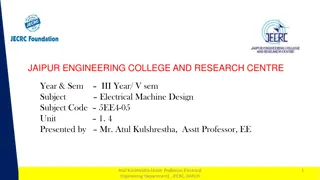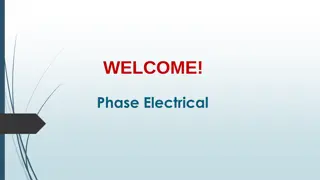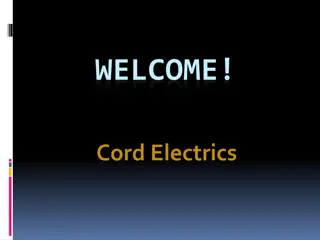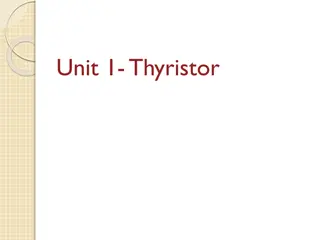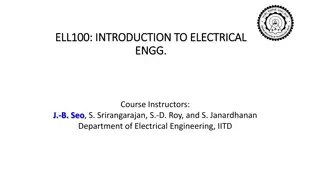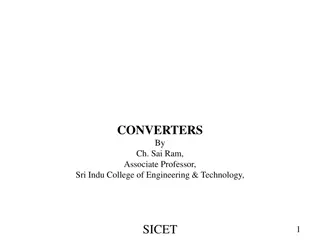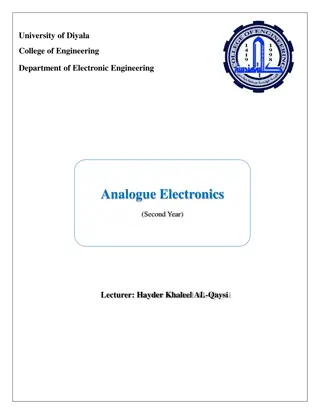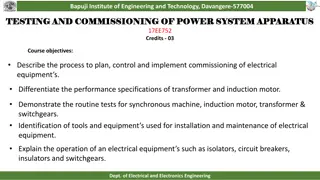Understanding Thyristors in Electrical Engineering
Thyristors are crucial power semiconductor devices with high power handling capability, rated at 5000V/6000A. They operate at switching frequencies from 1KHz to 20KHz. Learn about their operation, characteristics, triggering methods, and applications such as SCR, TRIACs, UJTs, and more.
Download Presentation

Please find below an Image/Link to download the presentation.
The content on the website is provided AS IS for your information and personal use only. It may not be sold, licensed, or shared on other websites without obtaining consent from the author. Download presentation by click this link. If you encounter any issues during the download, it is possible that the publisher has removed the file from their server.
E N D
Presentation Transcript
IECD 5thSEMESTER ELECTRICAL
Thyristors Most important type of power semiconductor device. Have the highest power handling capability. They have a rating of 5000V / 6000A with switching frequencies ranging from 1KHz to 20KHz.
SCR Symbol of Silicon Controlled Rectifier
Device Operation Simplified model of a thyristor
Methods of Thyristor Turn-on Thermal Turn-on. Light. High Voltage. Gate Current. dv/dt.
Gate Triggering Methods Efficient & reliable method for turning on SCR. Types R - Triggering. RC - Triggering. UJT - Triggering.
R-Triggering a vO b LOAD R1 i R2 v =V sin t S m VT D Vg R Resistance firing circuit
RC Triggering vO LOAD + R D2 VT - v =V sin t S m D1 VC C RC half-wave trigger circuit
Bidirectional Triode Thyristors (TRIAC)
Unijunction Transistor (UJT) UJT is another solid state three terminal device that can be used in gate pulse, timing circuits and trigger generator applications to switch and control thyristors and triacs for AC power control applications.
Unijunction Transistor (UJT) Equivalent Circuit: UJT s have unidirectional conductivity and negative impedance characteristics acting more like a variable voltage divider during breakdown
Unijunction Transistor (UJT) For a Unijunction transistor, the resistive ratio of RB1to RBBis called the intrinsic stand-off ratio ( ). ??1 ? = ??1+ ??2 Typical standard values of range from 0.5 to 0.8 for most common UJT s.
UJT Relaxation Oscillator In a basic and typical UJT relaxation oscillator circuit, the Emitter terminal of the Unijunction transistor is connected to the junction of a series connected resistor and capacitor.
UJT Relaxation Oscillator ??= ???(1 ? ?/?3?) 20
Triac Light Dimmer Light bulb a b Ingenious Triac (front view) 3.3k Simple MT2 + c Triac Efficient 250k linear pot Van G (from Variac) MT1 Inexpensive Bilateral trigger diode (diac) 0.1 F MT1 MT2 G n Light bulb Light bulb a a b b + + + + + 0V + Van Van Van Van 0V n n Before firing, the triac is an open switch, so that practically no voltage is applied across the light bulb. The small current through the 3.3k resistor is ignored in this diagram. After firing, the triac is a closed switch, so that practically all of Van is applied across the light bulb.


